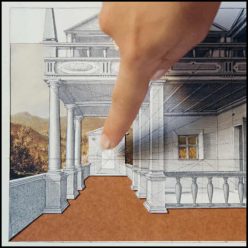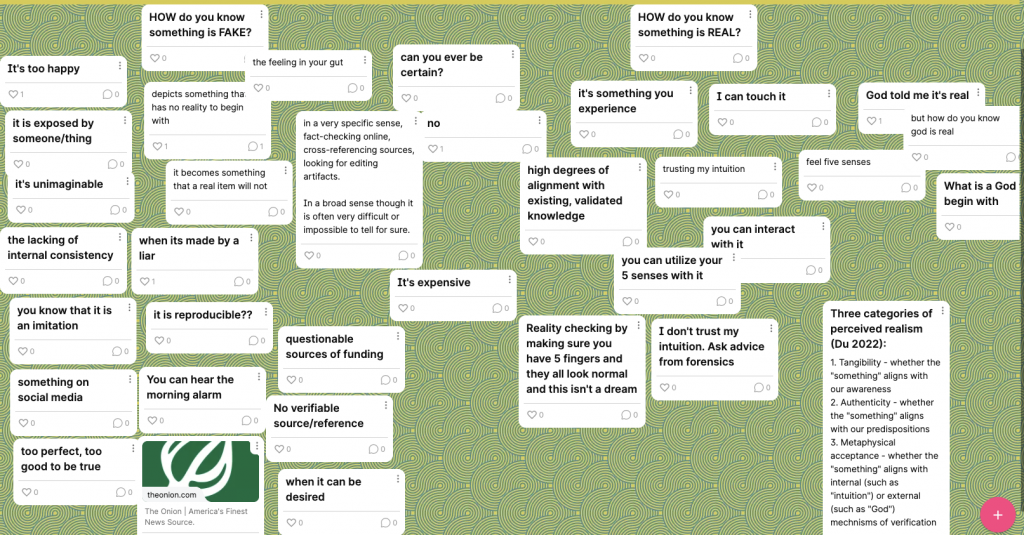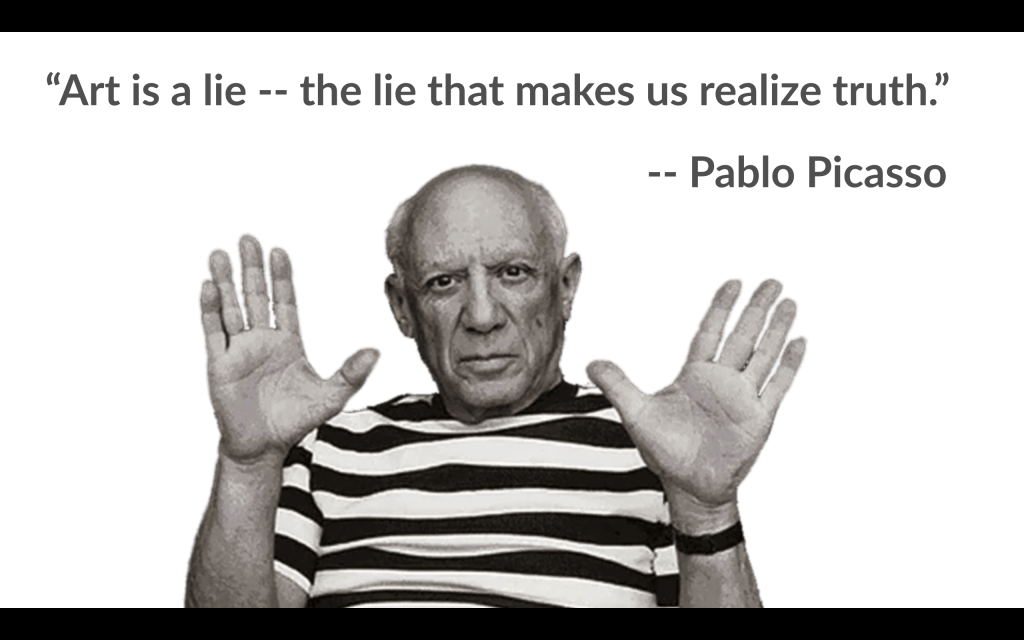
IN CLASS TODAY
• Student and instructor introductions, schedule, course overview and expectations, class protocol (website, Padlet, Remind)
• Why “The Art of the Fake”
• “The Fake” from the perspectives of philosophy, cultural criticism, psychology, and aesthetics
• Photoshop: Content-aware fill and 1930s Soviet photo retouching
ASSIGNMENTS
- INSTALL Cinema 4D on your home computer Download link
A 6-month student license is FREE - CREATE an “Introduction Post” on our Padlet : an image representing you + a sentence about things you like + a sentence about things you don’t like. You can also include an image of your work, or a link to media. https://padlet.com/kurtralske/artfake22
- CREATE a “Soviet Photoshop” image: select any photo (one you took, or found). Make a copy of it. Use Photoshop to make some element in the photo to completely disappear, as if it was never there. Post original and altered version of photo to Padlet. The assignment and the technique are described here:
4. VIEW and study this 15 minute tutorial video on essential concepts for 3D CLICK TO VIEW VIDEO (sorry WordPress “embed” is misbehaving)
LINK to HANDOUT for this tutorial video
5. READ this article “In the Age of AI, Is Seeing Still Believing?” CLICK HERE TO DOWNLOAD
[OPTIONAL] View this video outlining the themes that will arise in our seminar discussion and readings.

OPTIONAL…if you’d like to view the complete “F for Fake” (1973, Orson Welles) Click here to view movie (free on Tufts Kanopy)
These Viewing Notes may increase your enjoyment: Download here
Early Photographic Fakes (1850s)
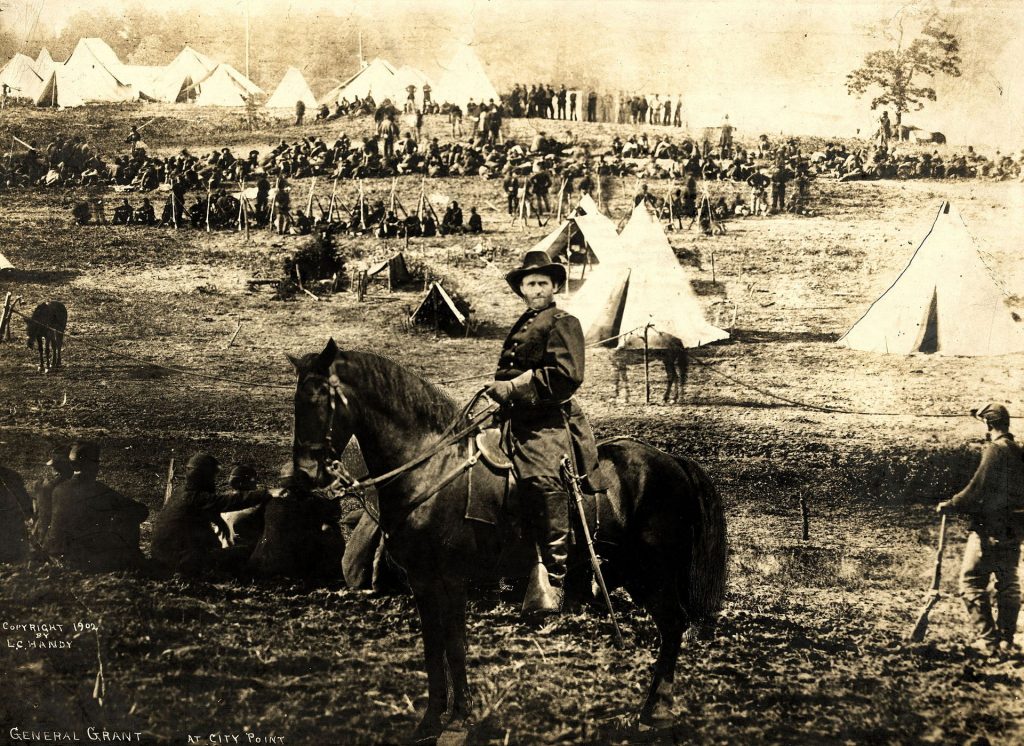
Close observation of the photograph raises questions and brings to light certain details in the photograph that simply do not add up. For example, Grant’s head is set at a strange angle to his body, his uniform is of a different time period, and his favorite horse Cincinnati did not have a left hind sock like the horse in the photograph, although his other horse Egypt did have a sock but on a different foot. With further research, three different photographs were discovered that explained the composite using Grant’s head from one photograph, the body of Major General Alexander McDowell McCook atop his horse from another photograph, and for the background, a 1864 photograph of Confederate prisoners captured at the Battle of Fisher’s Hill. 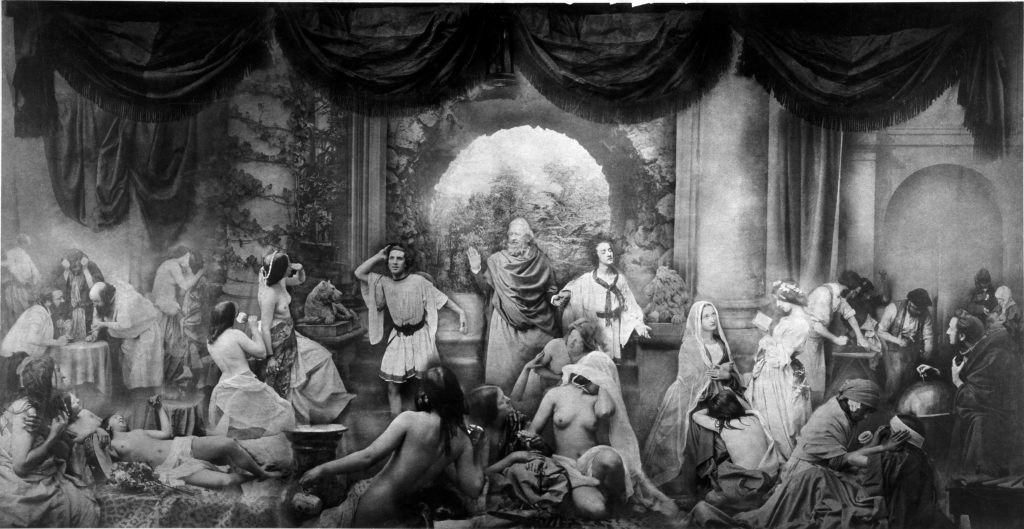
Oscar Gustave Rejlander, Two Ways of Life (1857) 
Retouching tools from the pre-digital era: gouache paint, kneaded erasers, charcoal sticks, and an airbrush 
Orientalist Study, 1858. The two men are in fact white Europeans, posing in a London studio.
